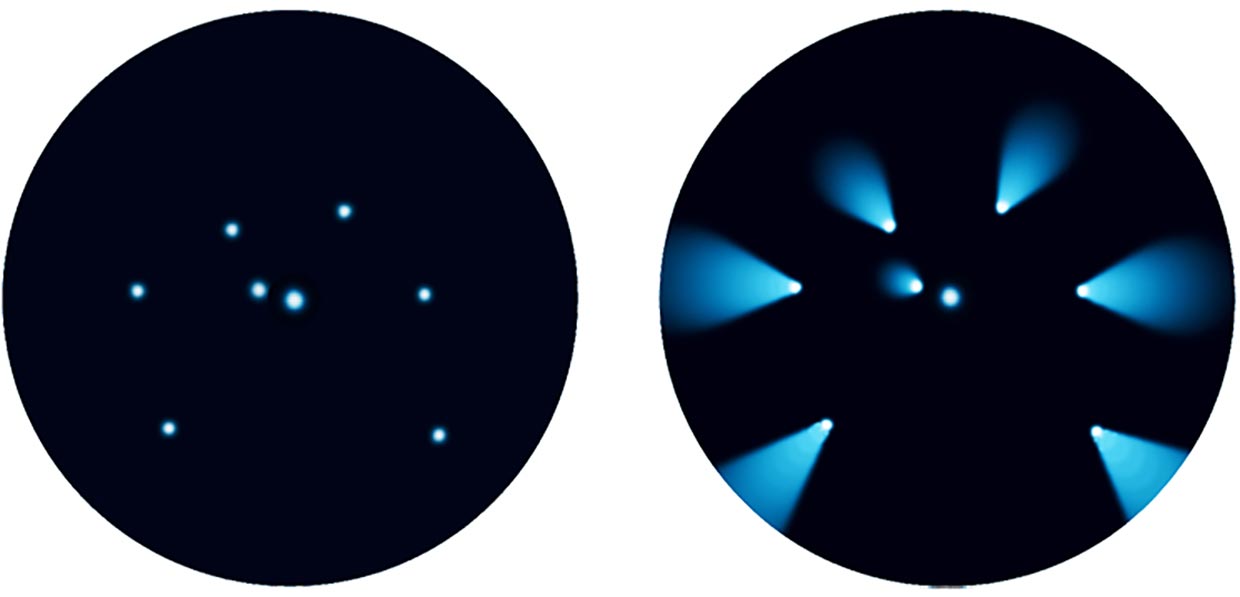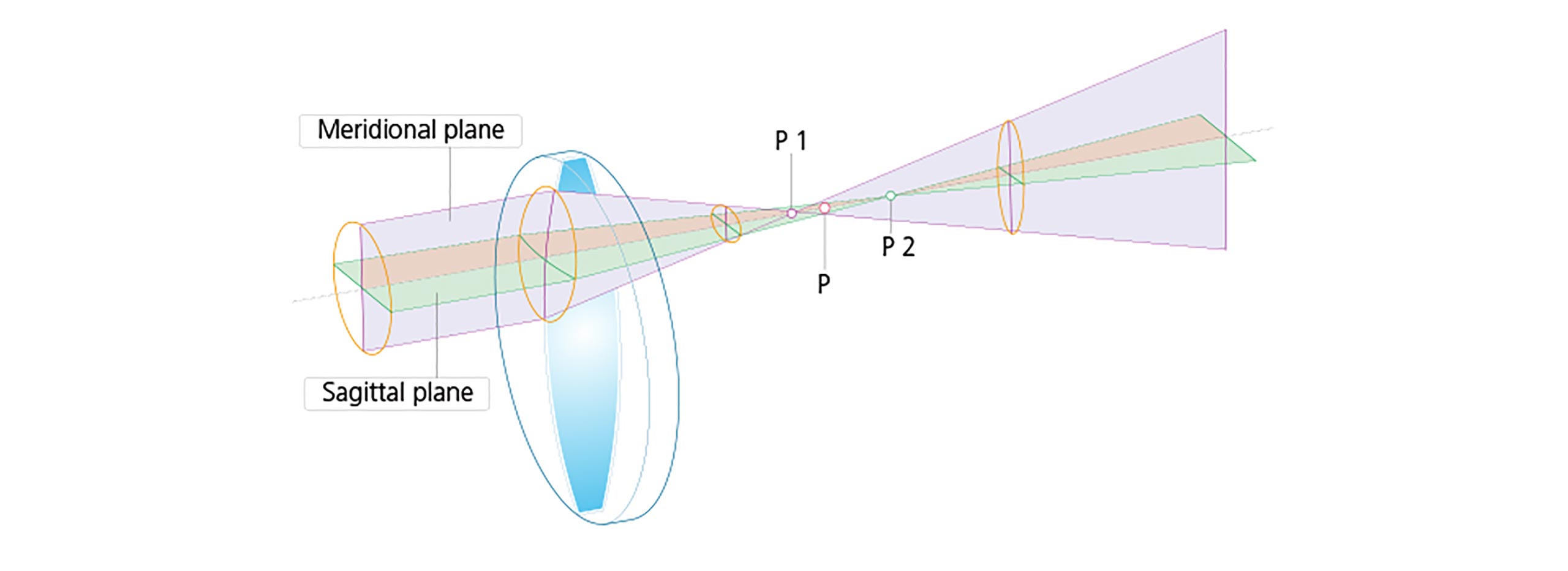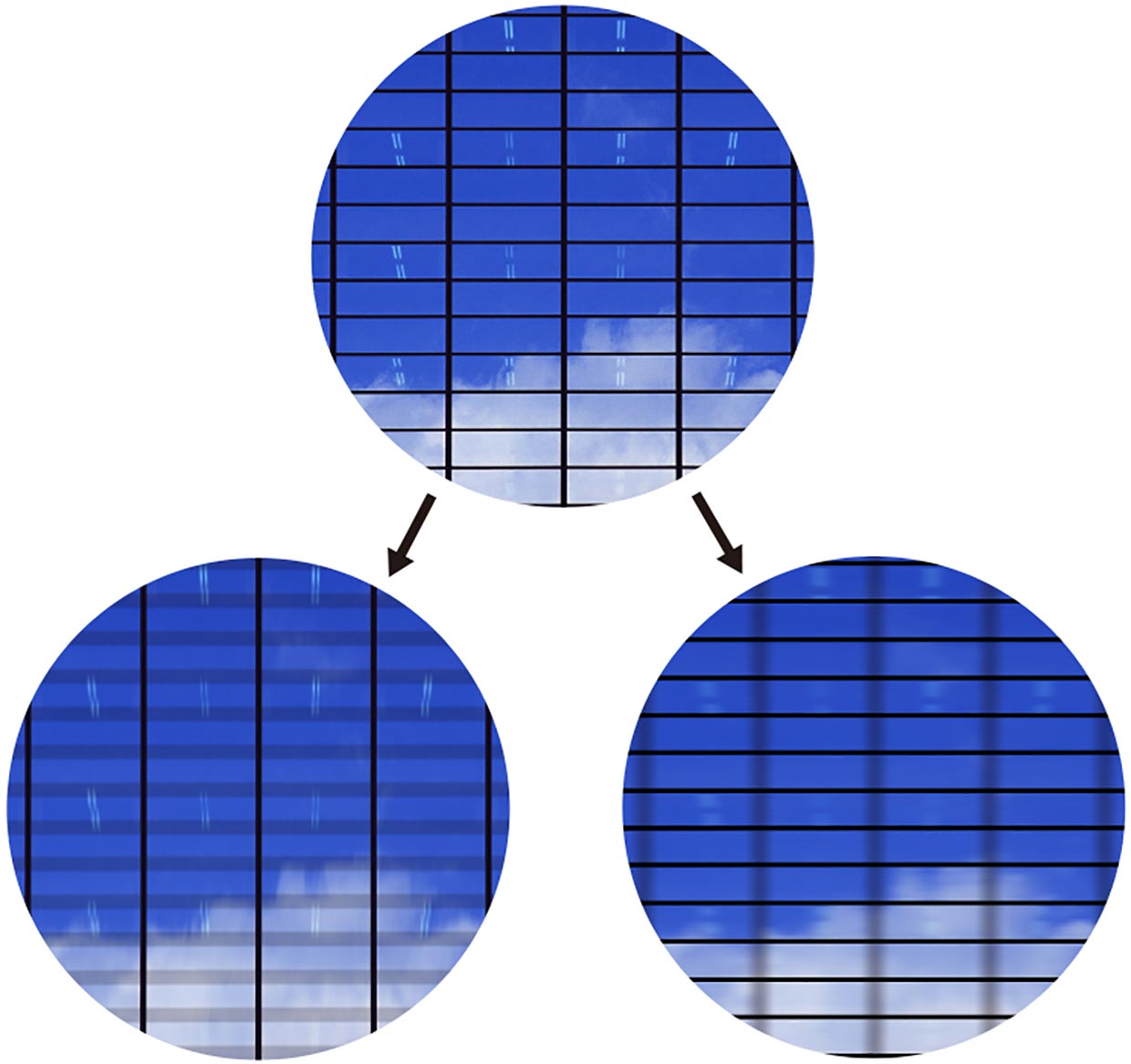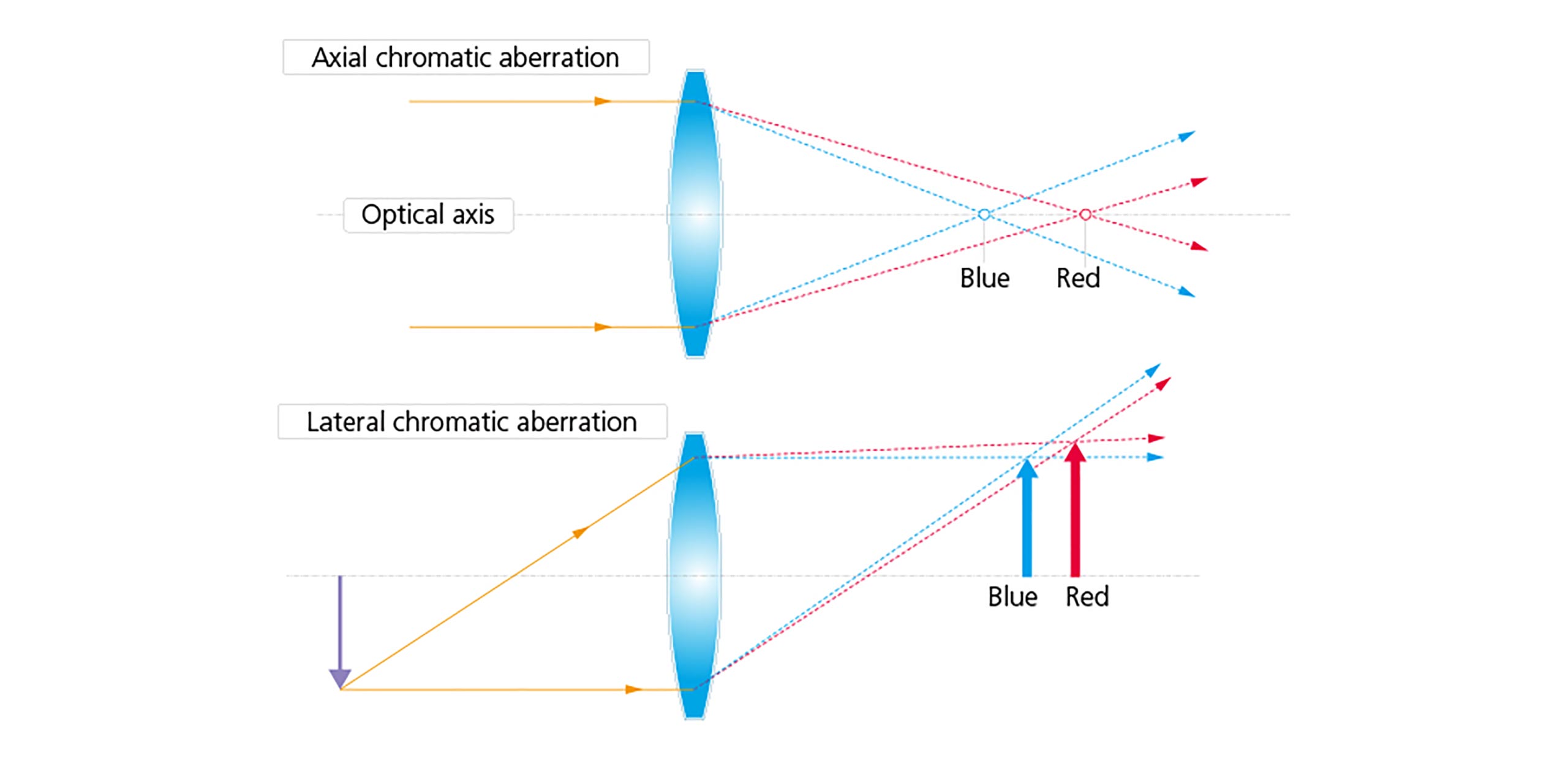Aberrations
Structure and Optical Technologies
Nikon's binoculars have received high evaluation because of their excellent optical system. Nikon knows that a bright image and sharp details are the priority of binoculars, and makes utmost efforts to achieve this. Correcting lens aberration is vitally important.
Nikon's binoculars are designed to correct the aberration described below properly to realize the brightest and sharpest image.
Spherical Aberration

A bundle of light rays coming from one point on the optical axis is focused at a different place than the focused point depending on the distance from the optical axis when the light incidents. This deviation is caused by variations in angles of each incident light ray, and is called spherical aberration.
Suppose a screen is placed at P' in the illustration above, the image of P will not be a focused point, but a blurred circle. Making the lens diameter smaller reduces such spherical aberration.

- *Photos are simulated viewfinder images.
Coma

This is caused by the difference in distance of the incident light from the optical axis. While spherical aberration is caused by a difference in focused point, coma is caused by a difference in magnification. A point image such as a star tails toward the exterior like a comet, which "coma" refers to. Coma strongly influences image quality in the periphery of the field.

- *Photos are simulated viewfinder images.
Astigmatism

The meridional plane (which contains the optical axis of the lens) and the sagittal plane (which is vertical to the meridional plane) have different radii. Therefore, the meridional and sagittal rays have different focal points. This is called an astigmatism aberration. When a latticepatterned object is viewed using a lens with an astigmatism, horizontal stripes appear in focus and vertical stripes appear out of focus. Conversely, when horizontal stripes appear out of focus, vertical stripes are in focus. Since astigmatism increases in proportion to the incident angle squared, astigmatism greatly influences image quality at the peripheral area of binoculars with a wide field of view.

- Horizontal stripes appear out of focus
- Vertical stripes appear out of focus
- *Photos are simulated viewfinder images.
Curvature of Field

In the case of a lens fully compensated for coma aberration and astigmatism, the light rays coming from a point apart from the optical axis are focused at one point. But this point is not always included in the vertical plane to the optical axis. This is called Curvature of Field. With a lens having this aberration, even if you focus around the center of the field, the periphery of the field appears out of focus. It can cause very bad effects especially on wide-field-type binoculars.

- *Photos are simulated viewfinder images.
Distortion

Distortion is caused by variations in the magnification of the image depending on the distance from the optical axis. There are two types of distortion: positive and negative.
This image distortion, irrespective of image visibility, increases in proportion to the incident angle cubed.

- Original shape
- Positive distortion
(pincushion type) - Negative distortion
(barrel type)
- *Photos are simulated viewfinder images.
Chromatic Aberration

This is caused by a difference in light wavelength. The focal point or magnification of a lens varies according to the wavelength of each type of incident light. Therefore, if you look at an image through a lens with chromatic aberration, color fringing may occur.
Because a single lens cannot compensate for chromatic aberration, two lenses of different optical characteristics are combined to correct this aberration.
Nikon's original ED (Extra-low-Dispersion) glass lenses effectively compensate for color fringing.

- *Photos are simulated viewfinder images.

ED glass and secondary spectrum
Visible light is composed of lights of various wavelengths. Gathering up all of these lights to a point is ideal for objective lenses.
With a single lens, because light is bent in the same way as with a prism, the focal lengths of lights with different wavelengths vary. As a result, not all light rays reach the same point, which causes chromatic aberration.
An achromatic lens made with conventional glass materials can match focal lengths of two different wavelengths. For red and blue colors, for example, that contain both ends of the wavelengths of visible light, chromatic aberration can be reduced to a certain extent by conforming their focal lengths. However, with more detailed examination, because light with other wavelengths such as green has different focal lengths, residual chromatic aberration results. This residual chromatic aberration is known as secondary spectrum.
Combinations of conventional glasses cannot solve this secondary spectrum problem, but particular optical materials which have a unique characteristic of dispersion are needed.
ED (Extra-low Dispersion) glass has this unique characteristic and when combined with other glasses minimizes the effects of the secondary spectrum. Comparing to achromatic lenses, ED glass reduces chromatic aberration to a remarkable degree.

